Samburu people of Kenya and their Culture
If you are not used to Samburu people of Kenya , you may think that the Samburu people are the same as Masai and even me today; it’s hard to differentiate between them.
The Samburu are related to the Masai although they live just above the equator where the foothills of Mount Kenya merge into the northern desert.
They are semi-nomadic pastoralists whose lives revolve around their cows, sheep, goats, and camels.
Milk is their main stay; sometimes it is mixed with blood. Meat is only eaten on special occasions.
Generally they make soups from roots and barks and eat vegetables if living in an area where they can be grown.
Most dress in very traditional clothing of bright red material used like a skirt and multi-beaded necklaces, bracelets and earrings, especially when living away from the big cities.
Called Loibor Kineji (people of the white goats) in the past, the Samburu people sometimes refer to themselves as the Loikop. Inhabiting parts of northern Kenya, the Samburu are nomads who speak Maa, the same language as the Maasai.
The eight patrilineal families and roughly seventeen small clans that comprise the Samburu people of Kenya generally live in small settlements of between four and six stock owners.
The Samburu are semi nomadic people who inhabit an arid region in northern Kenya they belong to the Maaspeaking group of people.
They have traditionally herded cattle, though lately some have taken up farming.
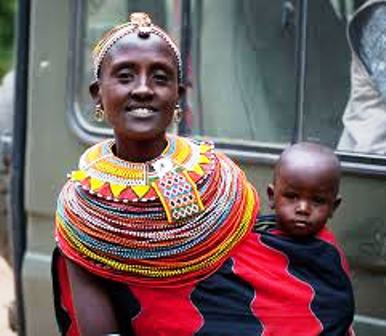
The Samburu share many customs with the Maasai. Changes in lifestyle have come as Samburu have traveled to other parts of Kenya.
The Samburu tongue is also related to Turkana and Karamojong, and more distantly to Pokot and the Kalenjin languages.
The Samburu have been in a somewhat defensive position with surrounding peoples moving around them.
They have maintained a military and cultural alliance with the Rendille, largely in response to pressures from the expanding Oromo (Borana) since the 16th century.
Generally between five and ten families set up encampments for five weeks and then move on to new pastures. Adult men care for the grazing cattle which are the major source of livelihood.
Women are in charge of maintaining the portable huts, milking cows, obtaining water and gathering firewood. Marriage is a unique series of elaborate ritual.
The marriage is concluded when a bull enters a hut guarded by the bride's mother, and is killed. Fertility is a very high value for the Samburu. A childless woman will be ridiculed, even by children.
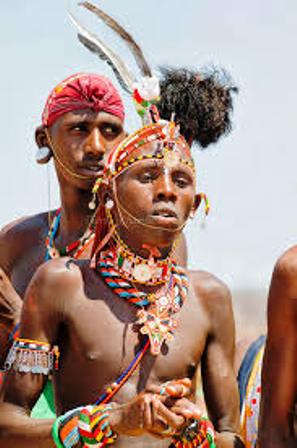
Duties of boys and girls are clearly delineated. Initiation is done in age grades of about five years, with the new "class" of boys becoming warriors, or morans. (il-murran) which involves training in adult responsibilities and circumcision for boys and clitoridectomy for girls. The moran status involves two stages, junior and senior.
Samburu are very independent and egalitarian. Community decisions are normally made by men (senior elders or both senior and junior elders but not morani), often under a tree designated as a "council" meeting site.
The Samburu love to sing and dance, but traditionally used no instruments, even drums. They have dances for various occasions of life
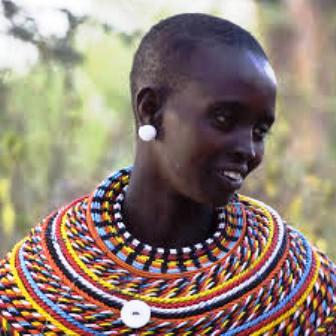
Their own traditional religion is based on acknowledgment of the Creator God, whom they call Nkai, as do other Maa-speaking peoples. They believe in charms and have traditional ritual for fertility, protection, healing and other needs.
The Samburu have many traditions and ceremonies for every occasion including the killing of a sheep for the birth of a baby; initiation or graduation rites as they prepare to become adults and marriage ceremonies which may occur after the initiation ceremony.
Girls generally marry between the ages of twelve and fifteen and boys usually, in their mid twenties.
Boys become murrani or junior warriors for about five years and then go through another ceremony to become a senior warrior.
Samburu girls hope to become "beaded" by their favorite warrior. If the young man likes the girl, he will give her layers of necklaces and pay a bride. The Samburu wear their traditional attire which is a bright red material worn like a skirt.
They also wear multi-beaded necklaces, bracelets and earrings. Moran is a term used in both Maasai and Samburu community to refer to a warrior. Like the Maasai, the Samburu also mix blood and milk to make their traditional drink.
The Samburu tribe of Kenya is closely related to the Maasai .
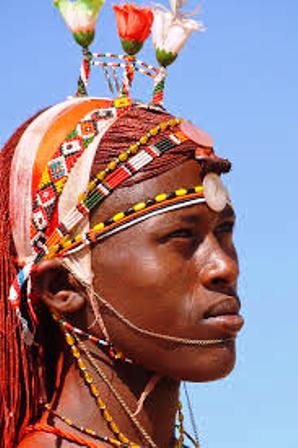 samburu warriors
samburu warriorsThe Samburu people moved from Sudan and settled north of Mount Kenya and south of lake Turkana in the Rift Valley province of Kenya . Like the Maasai, the Samburu belong to the Maa speaking group of people.
The Samburu and Maasai languages share words but the Samburu dialect is spoken in a more rapid manner than the Maasai language . Samburu people are semi nomadic pastrolist . Like the Maasai, livestock is the most important part of their livelihood. Samburu herd cattle, sheep, goats and camels .
They live in groups of families in make shift villages. The Samburu's hut resembles the Maasai's hut called "Manyatta".
The huts are made of mud and dung supported using branches from trees. Their huts are surrounded by a fence of thorny bushes from the acacia tree and other types of thorny bushes.
Women are responsible for making the huts, milking cows, gathering firewood, fetching water and general maintenance of the homestead. The men take care of the animals.
The Samburu wear their traditional attire which is a bright red material worn like a skirt. They also wear multi-beaded necklaces , bracelets and earrings. Samburu warriors paste their hair with red ochre to create a visor to shield their eyes from the sun. Samburu people have many traditional ceremonies ..
These include the birth of a child, initiation and marriage. Boys are circumcised in their teenage. Moran is a term used in both Maasai and Samburu community to refer to a warrior.
Like the Maasai, the Samburu also mix blood and mil k to make their traditional drink
Other Pages of Interest
Kenya Cultural Origins | Kenya Student Rules | Kikuyu People | Luo in Kenya | Masai People | Samburu People | Student Class Rules | Turkana People in Kenya |Recent Articles
-
Garam Masala Appetizers ,How to Make Garam Masala,Kenya Cuisines
Sep 21, 14 03:38 PM
Garam Masala Appetizers are originally Indian food but of recent, many Kenyans use it. Therefore, on this site, we will guide you on how to make it easily. -
The Details of the Baruuli-Banyara People and their Culture in Uganda
Sep 03, 14 12:32 AM
The Baruuli-Banyala are a people of Central Uganda who generally live near the Nile River-Lake Kyoga basin. -
Guide to Nubi People and their Culture in Kenya and Uganda
Sep 03, 14 12:24 AM
The Nubians consist of seven non-Arab Muslim tribes which originated in the Nubia region, an area between Aswan in southern
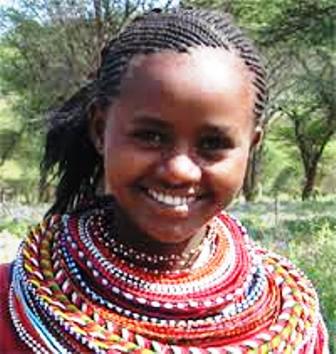
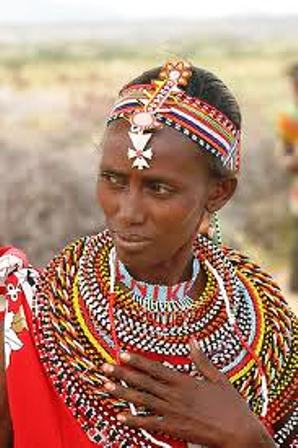
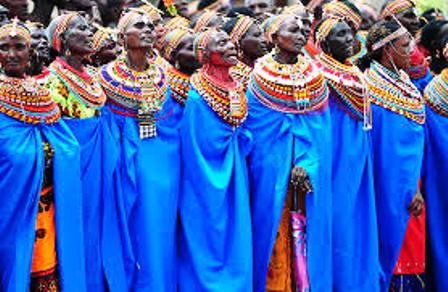
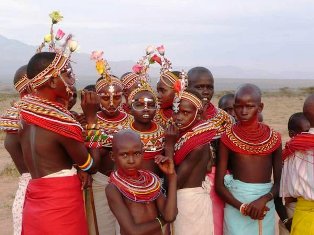
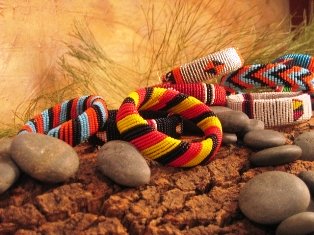
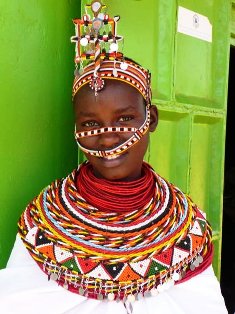







New! Comments
Have your say about what you just read! Leave me a comment in the box below.